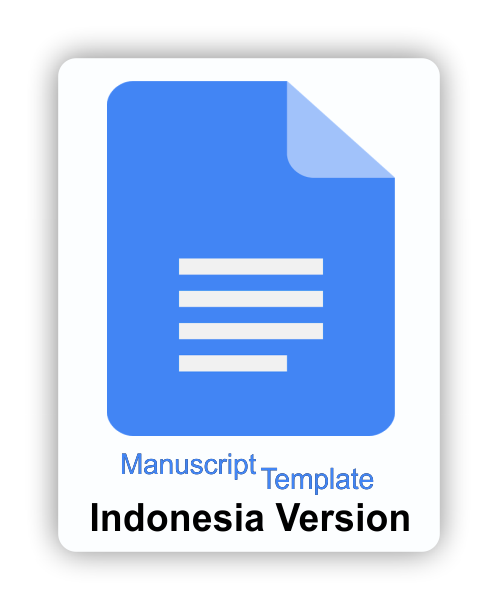Wearable technology (smartwatch) as an innovative learning support media post-COVID-19 pandemic
Downloads
Amin, S. (2019). Peningkatan profesionalisme guru melalui pelatihan pengembangan media pembelajaran sparkol videoscribe di Kabupaten Malang. Jurnal Pengabdian Pada Masyarakat, 4(4), 563-572. https://doi.org/10.30653/002.201944.238
Andriani, A., Ayu Saputri, D., Hopipah, R., & Puspa Dewi, T. (2024). Pentingnya media pembelajaran untuk meningkatkan minat belajar Siswa SDN 63/X Nibung Putih. Journal on Teacher Education, 5(3), 215–222. https://doi.org/10.31004/jote.v5i3.23657
Ardyan, E., Boari, Y., Akhmad, A., Yuliyani, L., Hildawati, H., Suarni, A., ... & Judijanto, L. (2023). Metode penelitian kualitatif dan kuantitatif: Pendekatan metode kualitatif dan kuantitatif di berbagai bidang. PT. Sonpedia Publishing Indonesia.
Attallah, B., & Ilagure, Z. (2018). Wearable technology: Facilitating or complexing education. International Journal of Information and Education Technology, 8(6), 433-436. https://doi.org/10.18178/ijiet.2018.8.6.1077
Herrera-Alcántara, O., Barrera-Animas, A. Y., González-Mendoza, M., & Castro-Espinoza, F. (2019). Monitoring student activities with smartwatches: On the academic performance enhancement. Sensors, 19(7), 1-18. https://doi.org/10.3390/s19071605
Budiyono, B. (2020). Inovasi pemanfaatan teknologi sebagai media pembelajaran di era revolusi 4.0. Jurnal Kependidikan: Jurnal Hasil Penelitian dan Kajian Kepustakaan di Bidang Pendidikan, Pengajaran dan Pembelajaran, 6(2), 300-309. https://doi.org/10.33394/jk.v6i2.2475
Daryanto, & Hisar, M. (2015). Media pembelajaran. Tutorial Nurani Sejahtera.
Effendi, D., & Wahidy, A. (2019). Pemanfaatan teknologi dalam proses pembelajaran menuju pembelajaran abad 21. In Prosiding Seminar Nasional Program Pascasarjana Universitas PGRI Palembang. https://jurnal.univpgripalembang.ac.id/index.php/Prosidingpps/article/download/2977/2799
Fauziyyah, N. (2019). The potential of augmented reality to transform education into smart education. Jurnal PAJAR (Pendidikan dan Pengajaran), 3(4), 966-973. https://doi.org/10.33578/pjr.v3i4.7433
Hasan, I. (2022). Analisis data penelitian dengan statistik (Edisi kedua). Bumi Aksara.
Ibrahim, R., & Syaodih, S. N. (2003). Perencanaan pengajaran. Rineka Cipta.
Isha, S., & Wibawarta, B. (2023). The impact of the COVID-19 pandemic on elementary school education in Japan. International journal of educational research open, 4, 1-8. https://doi.org/10.1016/j.ijedro.2023.100239
Jerath, R., Syam, M., & Ahmed, S. (2023). The future of stress management: integration of smartwatches and HRV technology. Sensors, 23(17), 1-14. https://doi.org/10.3390/s23177314
KBBI, online. (2024, Januari 6). [Pusat]. KBBI online. https://kbbi.web.id/pusat
Koutromanos, G., & Kazakou, G. (2020). The use of smart wearables in primary and secondary education: A systematic review. Themes in eLearning, 13, 33-53. https://files.eric.ed.gov/fulltext/EJ1290930.pdf
Liang, J. M., Su, W. C., Chen, Y. L., Wu, S. L., & Chen, J. J. (2019). Smart interactive education system based on wearable devices. Sensors, 19(15), 1-8. https://doi.org/10.3390/s19153260
Liang, L., Ren, H., Cao, R., Hu, Y., Qin, Z., Li, C., & Mei, S. (2020). The effect of COVID-19 on youth mental health. Psychiatric quarterly, 91(3), 841-852. https://doi.org/10.1007/s11126-020-09744-3
Mitru, G., Millrood, DL, & Mateika, JH (2002). Dampak tidur terhadap pembelajaran dan perilaku pada remaja. Teachers College Record, 104(4), 704-726. https://doi.org/10.1111/1467-9620.00176
Okuyama, J., Seto, S., Fukuda, Y., Funakoshi, S., Amae, S., Onobe, J., ... & Imamura, F. (2021). Mental health and physical activity among children and adolescents during the COVID-19 pandemic. The Tohoku Journal of Experimental Medicine, 253(3), 203-215. https://doi.org/10.1620/tjem.253.203
Quintana, R., Quintana, C., Madeira, C., & Slotta, J. D. (2016). Keeping watch: Exploring wearable technology designs for K-12 teachers. In Proceedings of the 2016 chi conference extended abstracts on human factors in computing systems (pp. 2272-2278). https://doi.org/10.1145/2851581.2892493
Rahmawati, M. (2022). Strategi pendidik menghadapi tantangan pembelajaran abad-21 di era revolusi industri 4.0. https://doi.org/10.31237/osf.io/erc6g
Sadiman, A. S., Rahardjo, R., Haryono, A., & Harjito. (2018). Media pendidikan: Pengertian, Pengembangan, dan Pemanfaatannya. Rajagrafindo Persada.
Sadikin, M. (2019). Pemanfaatan media gambar mata pelajaran sejarah di kelas X IPS SMA Muhammadiyah 2 Pontianak, Diakronika, 19(2), 121-126. https://doi.org/10.24036/diakronika/vol19-iss2/92
Sieniawska, J., Proszowska, P., Madoń, M., Kotowicz, Z., Orzeł, A., Pich-Czekierda, A., & Sieniawska, D. (2024). Measuring health: Wearables in fitness tracking, stress relief, and sleep management. Journal of Education, Health and Sport, 67, 50673-50673. https://doi.org/10.23736/s0026-4946.17.04914-3
Sipahutar, A., Rantung, D. A., & Naibaho, L. (2023). Pembelajaran inquiry menurut John Dewey dan penerapannya dalam pembelajaran Pendidikan Agama Kristen. Jurnal Pendidikan Agama Kristen, 8(2), 108–123. https://doi.org/10.33541/rfidei.v8i2.184
Sitompul, B. (2022). Kompetensi guru dalam pembelajaran di era digital. Jurnal Pendidikan Tambusai, 6(3), 13953-13960. https://doi.org/10.31004/jptam.v6i3.4823
Sugrah, N. (2019). Implementasi teori belajar konstruktivisme dalam pembelajaran sains. Humanika, Kajian Ilmiah Mata Kuliah Umum, 19(2), 121-138. https://doi.org/10.21831/hum.v19i2.29274
Suminar, D. (2019). Penerapan teknologi sebagai media pembelajaran pada mata pelajaran sosiologi. In Prosiding Seminar Nasional Pendidikan FKIP (Vol. 2, No. 1, pp. 774-783). http://jurnal.untirta.ac.id/index.php/psnp/article/viewFile/5886/4220
Surani, D. (2019). Studi literatur: Peran teknologi pendidikan dalam pendidikan 4.0. In Prosiding Seminar Nasional Pendidikan FKIP (Vol. 2, No. 1, pp. 456-469). https://jurnal.untirta.ac.id/index.php/psnp/article/viewFile/5797/4150
Syafi, M. A. S., & Kurniawati, R. (2023). Meningkatkan hasil belajar matematika operasi hitung satuan waktu menggunakan media pembelajaran smartwatch di SD. Ebtida: Jurnal Pendidikan Dasar Islam, 3(2), 334-341. https://doi.org/10.33379/ebtida.v4i02.3766
Tanjung, W. U., & Namora, D. (2022). Kreativitas guru dalam mengelola kelas untuk mengatasi kejenuhan belajar siswa di madrasah aliyah negeri. Jurnal Pendidikan Agama Islam Al-Thariqah, 7(1), 199-217. https://doi.org/10.25299/al-thariqah.2022.vol7(1).9796
Widodo, C. S., & Jasmadi. (2008). Panduan menyusun bahan ajar berbasis kompetensi. Elex Media Komputindo.
Wulandari, T., & Mudinillah, A. (2022). Efektivitas penggunaan aplikasi Canva sebagai media pembelajaran IPA MI/SD. Jurnal Riset Madrasah Ibtidaiyah, 2(1), 102-118. https://doi.org/10.32665/jurmia.v2i1.245
Vygotsky, L. S. (1978). Mind in society: The development of higher psychological processes. Harvard University Press.
Yusuf, MA, Herman, H., Abraham, A., & Rukmana, H. (2024). Analisis regresi linier sederhana dan berganda serta penerapannya. Jurnal Pendidikan, 6(2), 13331-13344. https://doi.org/10.31004/joe.v6i2.5184
Zabir, A. (2018). Pengaruh pemanfaatan teknologi pembelajaran terhadap motivasi belajar siswa SMPN 1 Lanrisang Kabupaten Pinrang [Disertasi doktoral, Universitas Negeri Makassar].
The journal allows the author(s) to hold the copyright without restrictions. Finally, the journal allows the author(s) to retain publishing rights without restrictions
 | Jurnal Inovasi Teknologi Pendidikan by http://journal.uny.ac.id/index.php/jitp is licensed under a Creative Commons Attribution-ShareAlike 4.0 International License. |























